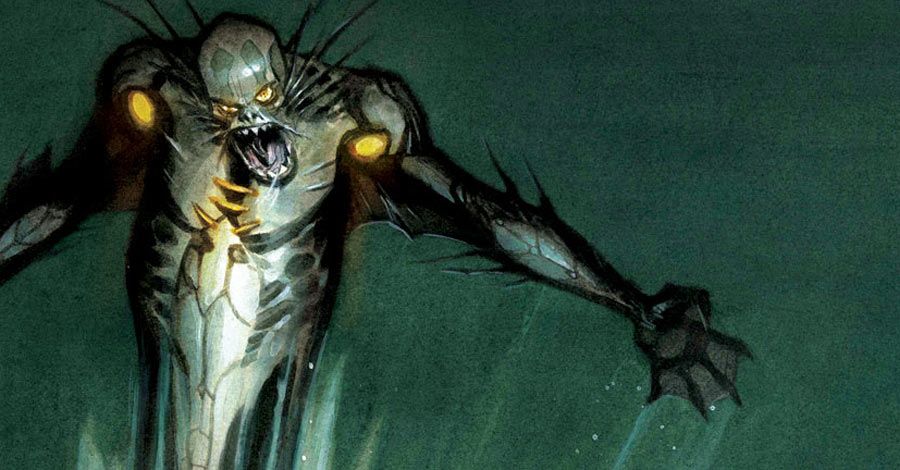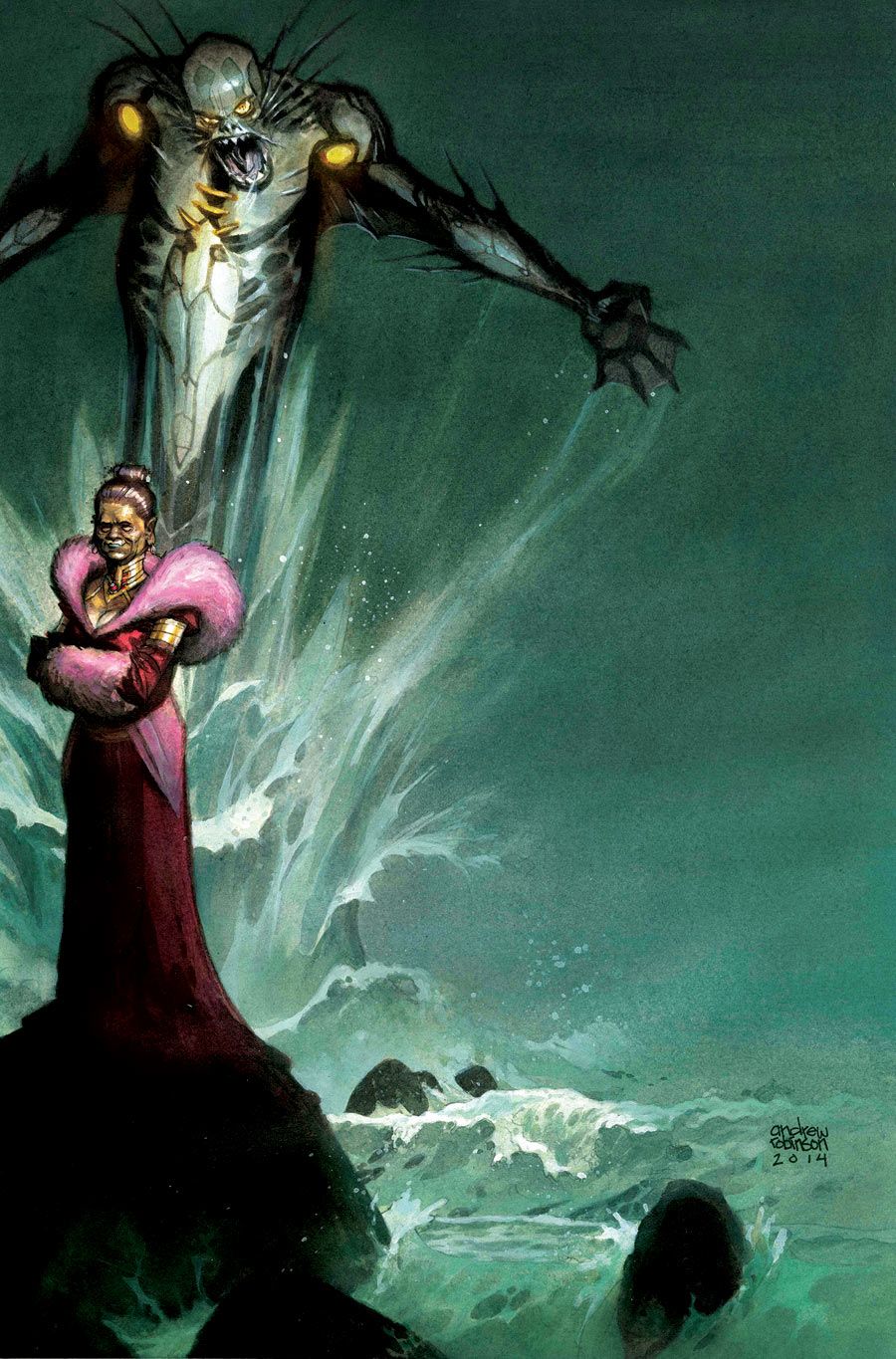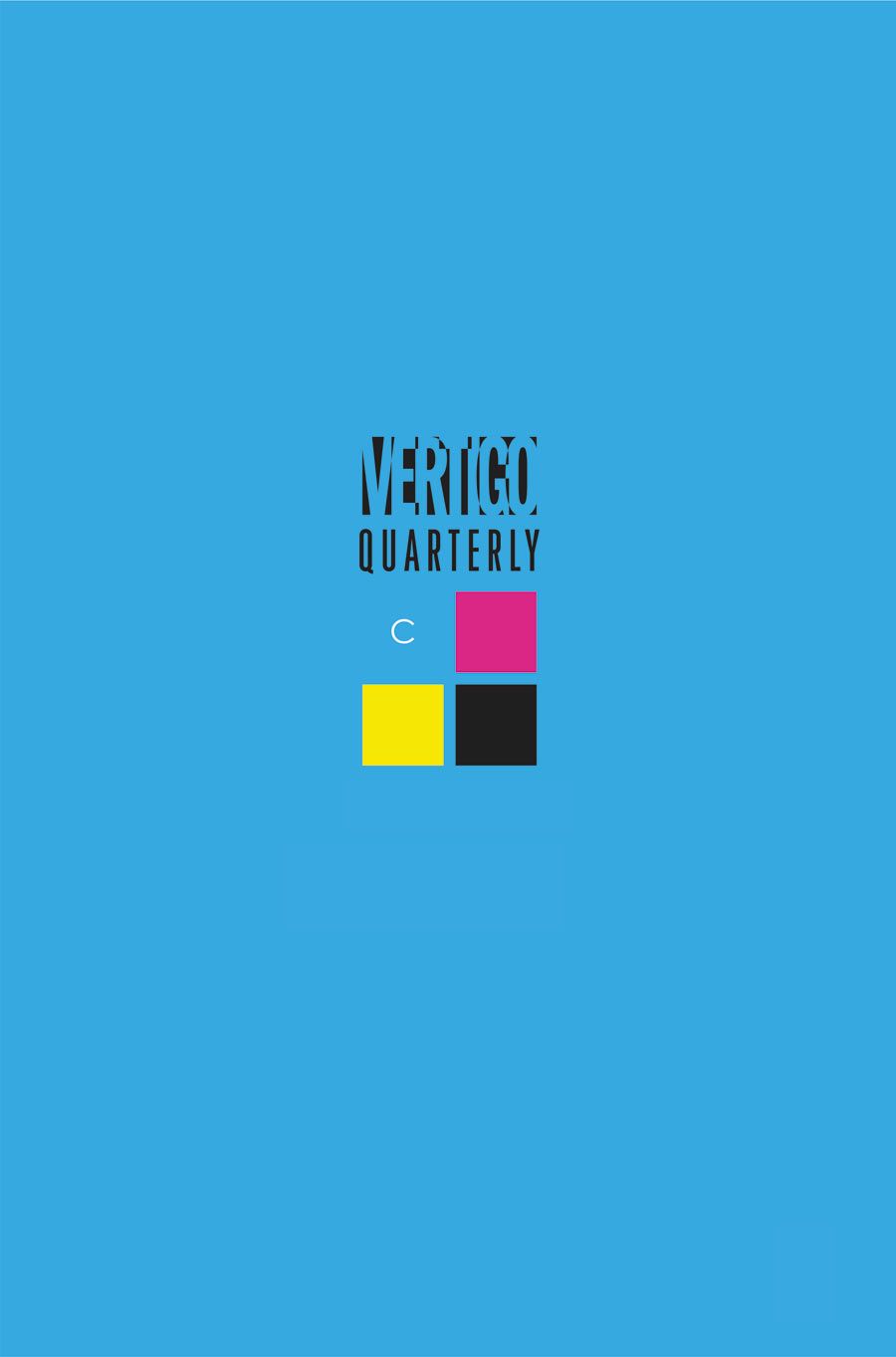In an extremely chilly conference room two stories above the show floor of the Chicago Comics & Entertainment Expo, DC Comics' VP of Marketing, John Cunningham vamped for a little bit, waiting for Scott Snyder, co-creator of Vertigo's "The Wake" and "American Vampire," to join the Vertigo: Defy panel. Snyder was a bit out of breath when he arrived, but quick to answer questions, tell stories and give a shout out to Jeff Parker, who had lent him an inhaler that morning. Other panelists included "Suiciders" creator Lee Bermejo; Vertigo staffer Greg Lockard; and "Vertigo Quarterly: Cyan" contributor Amy Chu.
Snyder kicked things off with "American Vampire: Second Cycle," describing his feelings about "American Vampire's" brief hiatus.
"It sucked," Snyder said, admitting that without "American Vampire," he was depressed, but getting to do "The Wake" made him feel better. "'Second Cycle' is about bringing all the characters and all the strains of vampires -- if you don't read the series, the vampires like Dracula are just one among thousands of species of monsters and vampire. They're all from the same bloodline that dates back to really ancient times," Snyder said. "In the 1880s, a new species of vampire monsters were born called the American vampire." Snyder then went on to describe the particulars of the American strand, such as their immunity to sunlight.
"This is the part where every monster in the world comes together to fight something much more ancient and evil that's introduced in this first issue," he continued. "In the second issue, the Gray Trader is sort of the mouthpiece for the Devil. The idea of the Devil for us is creating something that's scientific." Snyder said the thing about writing sci-fi and horror is to be specific so readers won't notice when things go off into crazy areas, like mermaids and monsters.
"The Devil is the first monster, the very first infection, we're trying to create something that's scientific and terrifying and burrows beneath the Earth and is responsible for myths of Hell and demons throughout different cultures and why there are bizarre similarities between cultures that never interacted with each other long ago, but had very similar myths about the first evil and ancient evil," he said.
In terms of planning, Snyder explained that the "American Vampire" series as a whole was flushed out pretty thoroughly. While the end of the series was in the initial pitch, Snyder said there was wonder to be found in the discoveries of the middle of the series, things that developed that he didn't anticipate or expect.
Snyder gave some background on his relationship with Stephen King, who Snyder had met through his own publication of short stories. Snyder's editor asked him if he could convince King to provide a short blurb about "American Vampire." Snyder explained the story, reliving dialog and explaining that after referring to King as "Mr. King" and being told by King to call him "Steve," he felt he sounded "like a total asshole." Snyder asked King for a brief, even just two-word endorsement. King liked the series enough that he offered to write an issue. Snyder declared that to be the best thing in his life, but at that time he also realized that it was the worst thing, thinking his editor would want King to write the first issue. Snyder second-guessed himself afterwards, but King's writing metamorphosed, "It got longer and longer and longer and it became, like, fifty pages." Snyder went on to describe the working experience with King, saying the novelist likes to mess with people. "He ended an issue, ... and then, Skinner becomes a bat and flies away. [I thought,] 'Oh my God, I have to tell Stephen King we don't do that!'"
King's reply was, "Oh, I'm just fucking with you, kid."
"But then he would do it again and I would fall for it again," Snyder said. The next time it was Pearl turning to mist.
Snyder also revealed that Felicia and Gus were not in the original pitch for the series. All of the other stuff was planned, but the joy of working on the series with a collaborator like Rafael Albuquerque is their ability to investigate characters as they come along, like Gus, Felicia and Cal. This led Cunningham to ask about working with Sean Murphy on "The Wake," as well as in "American Vampire: Survival of the Fittest," which featured Felicia, Gus and Gus' father, Cash.
Snyder discussed meeting and working with Murphy, who shared the "Wolverine Alphabet" book with him, which Murphy had created amid great controversy. After meeting the artist, the two decided they wanted to do something together, even before their collaboration on "American Vampire: Survival of the Fittest." Much of the content of that miniseries -- European castles, tanks and motorcycles -- were what Murphy wanted to draw.
"The Wake," Snyder's other Vertigo series, was a long time coming -- it had been kicking around the writer's head since 2007 or 2008. The inspiration came from a video he saw of a creepy dying eel-shark off the coast of Japan. Snyder provided a rundown of "The Wake," where a mermaid-like species is discovered and attacks in the first half of the series, but the second half of the series is really about what has happened after that species' attack. The writer explained that the series was meant to be an experimental book where he and Sean could go have fun, and they never intended to get the response that it did.
Snyder further mentioned that he gravitates towards female protagonists, and that Pearl is the American vampire. "There are more odds stacked against you as a female character," Snyder said of the worlds in which these stories take place. Snyder likes characters that are underdogs and offered his thoughts on Batman being an underdog as well. That led to some humorous stories about "Batman" and Snyder's collaborator on that title, Greg Capullo. Snyder mentioned an editorial decision to minimize Batman's butt crack in an issue of "Batman," saying, "He doesn't even need one, he just needs justice." The panel then joked about Batman and his bathroom activities. Batman turns his bowel movements into justice according to the writer, which brought thunderous laughter and applause from the audience.
After almost twenty minutes of the spotlight on Snyder, Cunningham moved down the line, asking Bermejo to share some information about "Suiciders," a post-disaster book that takes place in Los Angeles, thirty years after a huge earthquake decimates the city and much of southern California. While the story will depict bits and pieces of the disaster, L.A. becomes a splintered country. The area west of Hollywood Hills out towards the ocean is a wasteland. A walled city is established as New Angeles, a walled city and "Lost Angeles," which is a no man's land.
Cunningham shared some Bermejo's art, which depicted guards on a wall, ensuring no one crosses into New Angeles. Bermejo moved to Italy from the United States and had been wanting to tell an immigrant story. "One of the characters is an immigrant, trying to make his way from Lost Angeles into New Angeles," Bermejo said. "He's there to pursue a dream." That dream is to participate in the Suicide Games, a gladiatorial contest in New Angeles. It's his story of trying to make his dream come true without losing his soul.
Bermejo intends to add some satire about the quest to move to a new place and how that changes people. Cunningham interjected that Bermejo was scaring him (referencing the upcoming DC Comics editorial move from New York to Los Angeles). "Look, it's a great place for stories," Bermejo said in response.
The recently-announced "Vertigo Quarterly: CMYK" was the next major project on deck, and Lockard said the concept came about because four anthologies were approved, but they needed a theme. The editorial team went with "CMYK" -- cyan magenta, yellow and black -- the process colors for print production of comics. The concept was that the stories could be anything tied to the color.
"It was really very interesting," Amy Chu said. She made a pitch for "Cyan," but kept referring to it as blue throughout the panel. She said the theme was very loose, it was just a color. It could be incorporated in any fashion: mood, the color itself or even the name of the character. She pitched a story, but didn't hear back. Someone emailed her to let her know her name was in the solicitation. "Of course, this is a dream come true, to write for Vertigo," said said, but noted it was odd to find out in that manner. "Blue is one of my favorite colors. It's a very emotional color, it's a very moody color. I just feel like it builds very strong emotions."
Chu's story is one of nine in "Vertigo Quarterly: Cyan," and focuses on the rebooting of Detroit in the form of New Detroit, with Detroit on an upswing. It's about a rhythm and blues singer who's been put out to pasture. She meets a Miley Cyrus analog and from there, "it gets very dark." Chu lobbied to get Alitha Martinez on the story, an artist who worked in the industry for fourteen years (most of which was spent as Joe Quesada's assistant). Her contribution to "Cyan" is the first time Martinez has ever penciled a black woman in comics.
The anthology hits April 30 and includes stories by Tony Akins, Joe Keatinge, Lee Garbett, Jock, Fabio Moon, Cris Peter, James Tynion IV and Robert Rodi. (Moon will contribute a six-page story to each of the four volumes.)
Si Spencer's 8-issue time-traveling serial killer story "Bodies" was the last project mentioned in the presentation. Dean Ormston, Phil Winslade, Meghan Hetrick and Tula Lotay are the artists on the series, with each artist drawing the story in a different timeline. It launches July 30.
The audience question-and-answer period covered a number of topics, but the first question was about Travis Kidd, the rockabilly vampire hunter from "American Vampire," and what his role might be going forward. Snyder revealed that he is, indeed, coming back and, "He's even more badass, if you could imagine Elvis from 1968-1971 where he's got the muttonchops, but he's super crazy and thin, like kung fu badass amazing. That is where Travis is. He's got this amazing muscle car that has like wooden blades that pop out of the sides."
Snyder also revealed that they will be visiting the space program, noting that Albuquerque already sketched a cover, trying to convince Snyder to take "American Vampire: Second Cycle" into space. Snyder loves Albuquerque and C2E2, sharing a story that he and Albuquerque came to this con shortly after "American Vampire" #1 came out. The two of them handed out copies of "American Vampire" together, trying to convince people to read it by telling them it had Stephen King in it. Snyder continued his stories of working with Albuquerque, including the artist giving Snyder's parents a page of Hattie Hargrove getting hacked open.
On question asked the panelists why they choose to publish their stories with Vertigo. "'Cuz I don't know any different," Bermejo said. He also added that his editor, Will Dennis, is someone he's been working with for twelve to thirteen years. Snyder agreed, citing, "really fierce loyalty" to the imprint.
Also revealed on this panel was the fact that Chu was a student of Snyder's. He didn't give her any help after she had finished his program, all of which was revealed to the audience -- and to Amy -- at this panel. Snyder again pointed to the loyalty and added that Vertigo is committed to finding new, talented creators.



